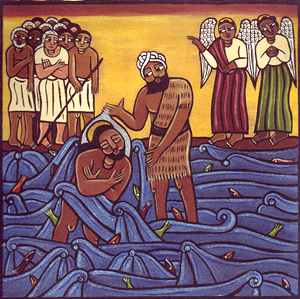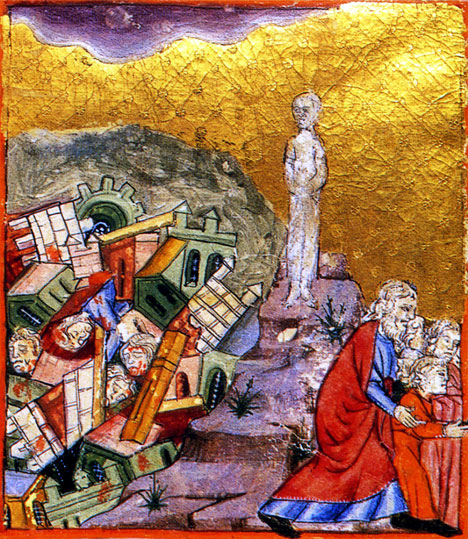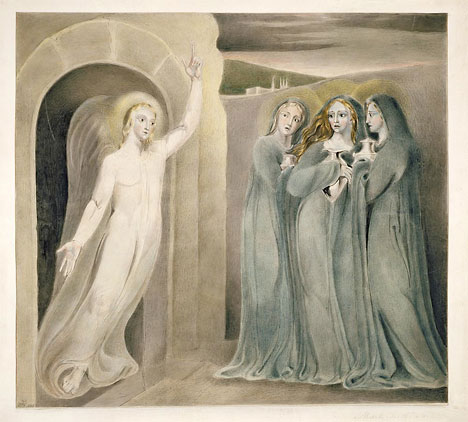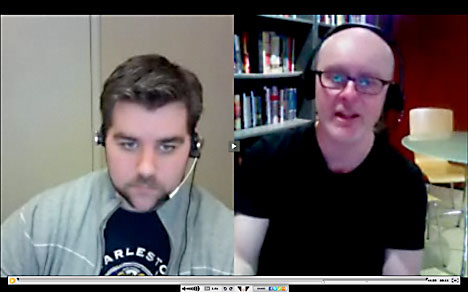Apr
25
2012

I’m banging the drum again. Under the title Constant Conversion, Doug Wilson writes:
The true Christian life is a life of true conversion. The Latin is the word for turning around, turning from one direction to go in another.
Continue reading
Comments Off | tags: Baptism, Doug Wilson, Federal Vision, Postmillennialism, Sacraments | posted in Biblical Theology, Christian Life, Quotes
Apr
25
2012
 James Jordan is continuing his commentary on Esther in the Biblical Horizons newsletter. As always, he makes some interesting observations on Haman’s “prospectus” speech to the king in Esther 3, in which he describes the Jewish people:
James Jordan is continuing his commentary on Esther in the Biblical Horizons newsletter. As always, he makes some interesting observations on Haman’s “prospectus” speech to the king in Esther 3, in which he describes the Jewish people:
The first thing to notice is that what Haman says is correct. The Jews do have different laws and customs. The word here is dat, which is a general word for laws and customs and mores. This much is quite true, and has been no problem in the Persian empire.
Continue reading
Comments Off | tags: Esther, Haman, James Jordan, Moses, Nebuchadnezzar, Persia | posted in Biblical Theology, The Restoration Era
Apr
23
2012
2 comments | posted in Bible Matrix
Apr
15
2012
Here’s a draft of the intro for the upcoming videos.
Continue reading
4 comments | posted in Bible Matrix
Apr
13
2012
 Kerry Lewis shared an interesting article relating the difference between the final events on the Titanic and the version portrayed in movies.
Kerry Lewis shared an interesting article relating the difference between the final events on the Titanic and the version portrayed in movies.
“Men of power and prestige sacrificed their lives for women and children of the lower class, many of whom were indentured servants, day laborers, and domestic workers. On this flotilla of self-absorption, self-sacrifice became a prevailing virtue during a crisis moment, and the powerful chose death that the powerless might receive life.”
The era of such brave sacrifice is gone, along with the Christian worldview that sustained it. Progressives accuse conservatives of nostalgia for a culture that is past, a time we cannot recreate. They are half right. It is gone forever, but the future (or “eternal utopian present”) imagined by progressives is unsustainable, if not downright destructive. We agree on the death of the old culture, but have very different ideas about the future.
Continue reading
3 comments | tags: Culture, Masculinity, Rich Bledsoe | posted in Christian Life, Quotes
Apr
12
2012
or The Liturgical Significance of Lot
 Part 1, The Architectural Significance of Lot’s Daughters, is here.
Part 1, The Architectural Significance of Lot’s Daughters, is here.
We’ve looked at the three-level Tabernacle structure in Genesis 19. That’s the rooms, and their doors, so what about the furniture?
The events follow the Bible Matrix, so an identification of how each step in the story fulfills the Creation Week might shed some light on the point of the details that the Spirit has included for us. And identifying how each step fulfills the Festal Calendar might also shed some light on the motivations of Lot and his daughters. The prefigurements of events nearly half a millennium in their future are breathtaking.
Continue reading
1 comment | tags: Abraham, AD70, Altar of the Abyss, Covenant curse, Feasts, Genesis, Literary Structure, Revelation, Sodom, Systematic typology, Tabernacle | posted in Bible Matrix, Biblical Theology, The Last Days
Apr
11
2012
Kevin DeYoung contrasts radicalism with old-fashioned consistency:
Continue reading
Comments Off | tags: Ecclesiology, Kevin DeYoung, Revolution | posted in Christian Life
Apr
10
2012
or The Practical Expression of Commonality in Primary Doctrinal Truth
Presbyterians and Baptists have a long history of working together. As is God’s way, any new endeavour must take the past into account but not be bound by it. This is a guest post by my friend Matt Carpenter.
The questions surrounding the origins and necessity of denominations have been discussed at great length and I don’t intend on bringing them up here. But it doesn’t mean we have a license to continue without giving it another thought. This isn’t another call for lip-quivering ecumenism. Fellow soldiers in God’s army can learn a lot from one another and the two groups I currently have in mind are Baptists and Presbyterians. Traditionally they have shared a lot in common.
Continue reading
2 comments | tags: Church History, Evangelism, Evolution, Humanism, Philosophy, Puritans, Revivalism, Spurgeon | posted in Christian Life, Creation, Quotes
Apr
9
2012
or The Architectural Significance of Lot’s Daughters

“His eyes [were] like a flame of fire …
[and] out of His mouth went a sharp two-edged sword”
(Revelation 1:14-16)
“I will set My face against you,
and you shall be defeated by your enemies.”
(Leviticus 26:17)
The Tabernacle layout to the Bible narratives is like the Globe Theatre to Shakespeare. [1] If we understand the correspondences we can get the “architectural” relationships worked out. The same blueprint appears again and again, and it explains the motivation of “righteous Lot” in the offering of his daughters to the men of Sodom. Continue reading
1 comment | tags: Abraham, Altar of the Abyss, Genesis, Lot, Sodom, Systematic typology, Tabernacle, Ten Commandments | posted in Biblical Theology, The Last Days
Apr
8
2012
 All the New Testament writers use the Bible Matrix. A possible application of the identification of literary structures is the solving of disputes over textual variants. I applied the matrix to Mark 16, where verses 9-20 are considered by many to be a later addition. Guess what?
All the New Testament writers use the Bible Matrix. A possible application of the identification of literary structures is the solving of disputes over textual variants. I applied the matrix to Mark 16, where verses 9-20 are considered by many to be a later addition. Guess what?
Continue reading
Comments Off | tags: Feasts, Literary Structure, Mark, Resurrection | posted in Bible Matrix, Biblical Theology
































